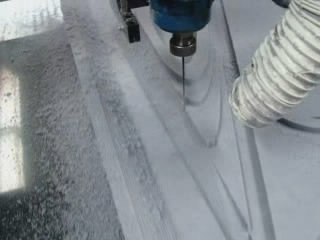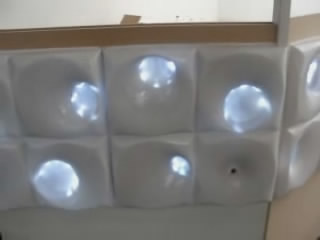 |
||||||||||||||||
|
Links
|
popMotion This work was done in collaboration with Dani Eshed and Luis Palomares from the Architecture and Urban Design department at UCLA, for the technology seminar taught by professor David Erdman. It consisted in a project proposal for an interactive storefront for the LACE gallery in Hollywood boulevard, Los Angeles. The goal of this seminar was to explore issues of interactivity in the public space, inside and outside, transparency and opacity of a facade and, more specifically, how to integrate into the storefront specific elements about the location of the LACE gallery (the Hollywood walk of fame, for instance), and the gallery itself. This proposal was based on the idea of translating the motion of the passers-by onto the facade of LACE. A simple panel design was chosen to create an abstracted representation of these motions. However, the panels also allowed for many different recombinations and patterns given their non-symetrical nature. LED lighting was embedded into the panels to generate a "low resolution screen" that followed the motions of the people on the street. The panels were also placed on the inside and they display the same lighting pattern, thus translating the "outside in". Project boards (click to download)
Pictures (click to enlarge)
Technical details The motion detection was implemented using a webcam embedded into the prototype. The tracking program, written in Processing, detected motion using a simple background differencing algorithm. The prototype controlled 19 LED clusters that were installed inside the inner and outer panels. The intensity of these LEDs had to be adjusted continuously from zero to full brightness, according to the motion patterns detected with the camera. This was solved using the 32 channel DMX dimmer board by Celestial Audio. The DMX board was interfaced with Processing through the Enttec's DMX USB Pro adapter. In this way, the intensity for the LEDs was written in Processing to the serial output, which in turn was converted into DMX data by the DMX USB adapter. Here there is more information about DMX and LEDs. The program used to do the motion tracking and to control the lighting behaviors can be downloaded from the link below: Interactive wall program (it requires the JMyron library for camera handling) As a part of this program, I implemented a DMX class based on the code posted here. I simplified the code of the example, so I think this class might be a little bit faster: DMX object for processing In this page you can download documentation that explains in detail the message format of the DMX USB Pro and also some sample programs (in C). |
|||||||||||||||
| Andrés Colubri's webpage
:: andres.colubri@gmail.com |
||||||||||||||||

















